If you've been preparing healthy meals the same way for years, here are some easy changes you can make to maximize the nutritional benefits you get from food.
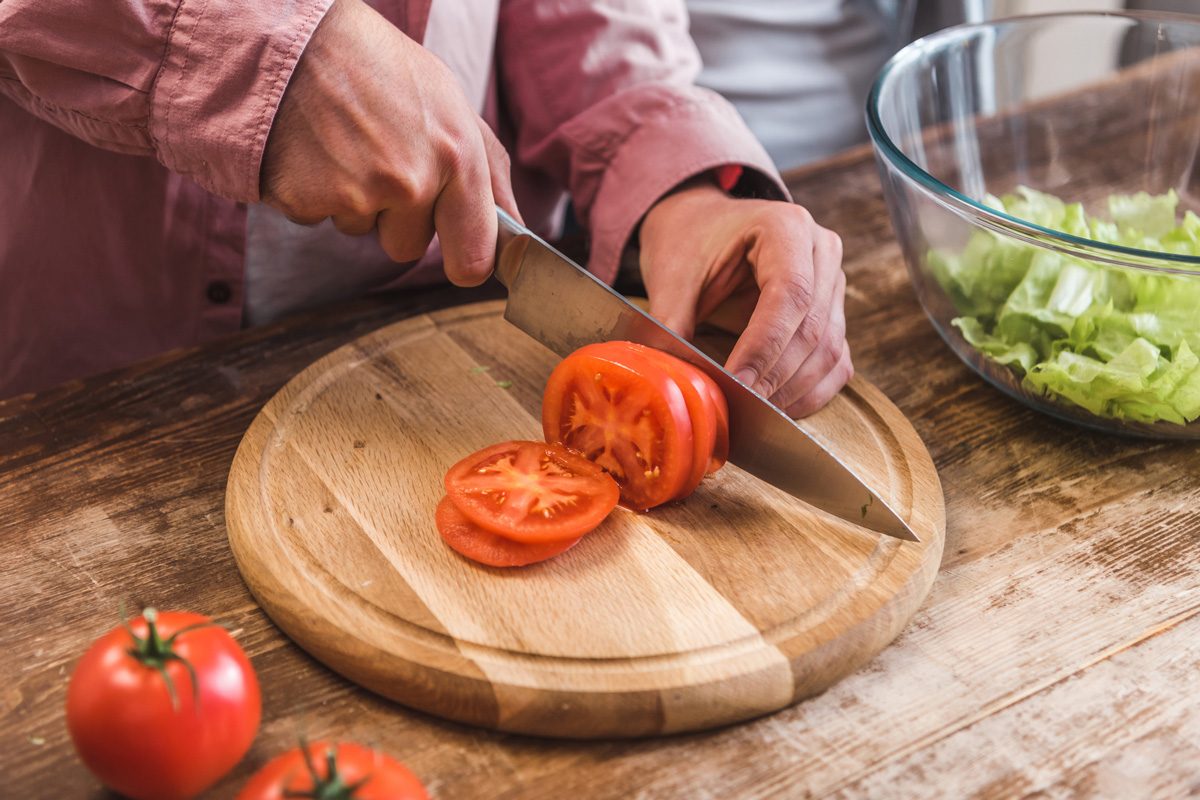
20 Healthy Meal Prep Hacks For More Nutritious Food

Let’s face it: It’s tough to consume all the necessary nutrients we need each day. A study published in The Lancet in 2024 found that over 5 billion people around the world are not consuming enough iodine, vitamin E, and calcium and over 4 billion do not consume enough iron, riboflavin, folate, and vitamin C.
Luckily, there are ways to combat this. We reached out to several experts to find out the best ways to prepare 20 foods to maximize their nutrients. Read on for some healthy meal prep hacks to try this week.
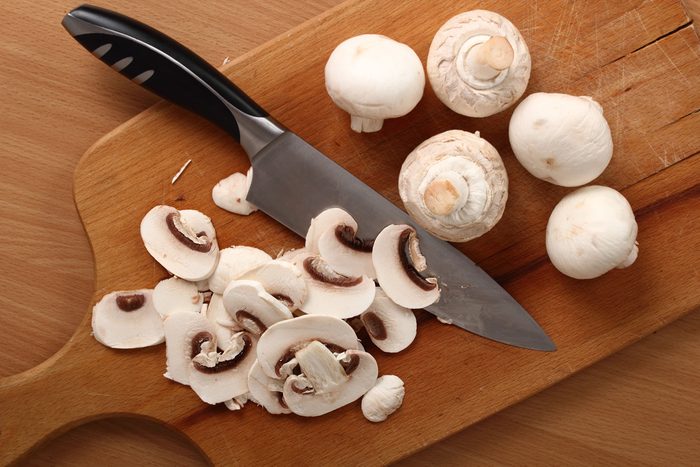
1. Microwave your mushrooms
Let’s say you’ve always prepped mushrooms by boiling them. That can yield delicious results, but it might not be the best way to preserve their nutrients. A 2016 study in the International Journal of Food Sciences and Nutrition found that grilling or microwaving mushrooms packs the biggest health punch.
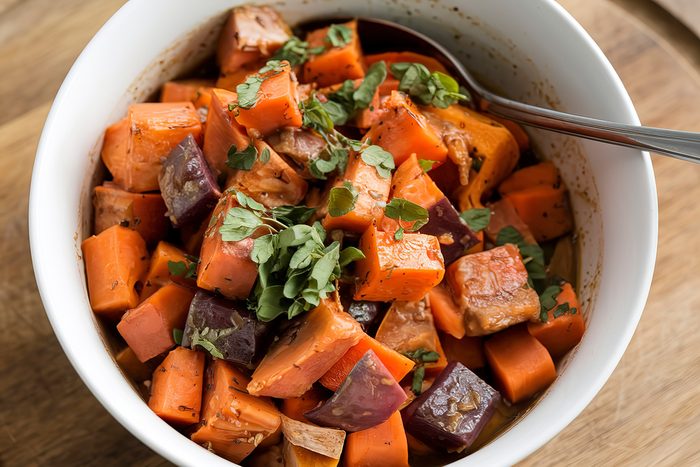
2. See the power in sweet potatoes
If you love sweet potatoes, it might be tempting to boil them. Skip it and steam, microwave, or bake them instead to help retain more of the anthocyanins, compounds with antioxidant and anti-inflammatory powers, says Christy Brissette, a registered dietitian in Toronto.
Bonus: Steaming also helps reduce the glycemic index of your sweet potatoes. “This means you’ll get a slower release of sugar into your bloodstream which can help you stay full longer,” she says.
Tip #1: Don’t peel ’em. Instead, simply remove blemishes and cook sweet potatoes with the skin on as the skin is loaded with extra fiber and potassium, nutrients that are important for heart health.
Tip #2: Serve with a teaspoon of heart-healthy fat such as olive oil or avocado oil. “Having about five grams of fat with your sweet potato will help you absorb more of the beta carotene, a nutrient that provides eye health and antioxidant benefits,” Brissette says.
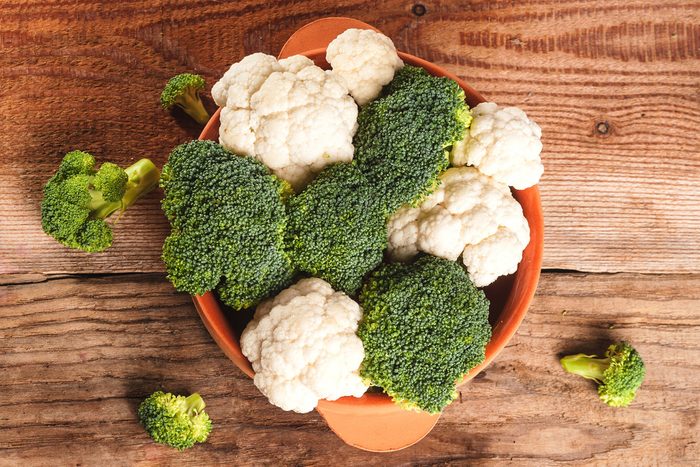
3. Go raw with cauliflower and broccoli
It’s tempting to pop yummy cauliflower rice and broccoli tops into a stir-fry. Instead, try eating these veggies raw. “You’ll be creating more isothiocyanates, phytochemicals that may help prevent and fight cancer,” Brissette says. “The precursor to this compound is easily destroyed by heat, so there could be less potential cancer-fighting power when you cook them.”
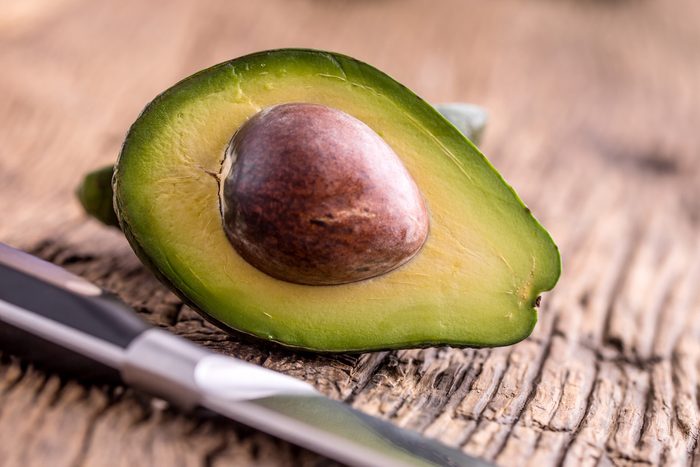
4. Stay ripe with that avocado
There’s nothing like perfectly ripe avocado and the rich, creamy texture and nutty flavor that adds so much to so many dishes. “However, the window from perfectly ripe to rotten is pretty small so to capitalize on their nutrients, including high levels of monounsaturated fats—the heart-healthy kinds—use them as soon as they ripen,” says Rachel Begun, a registered dietitian in Los Angeles. “Eating them at peak ripeness means you’ll best reap the benefits of avocados, nutrient powerhouse, an excellent source of vitamins C, E, B6, folate and K as well as fiber and potassium.”
Tip: If you want a hard avocado to ripen more quickly, place it in a paper bag on the kitchen counter for a few days. Don’t refrigerate!
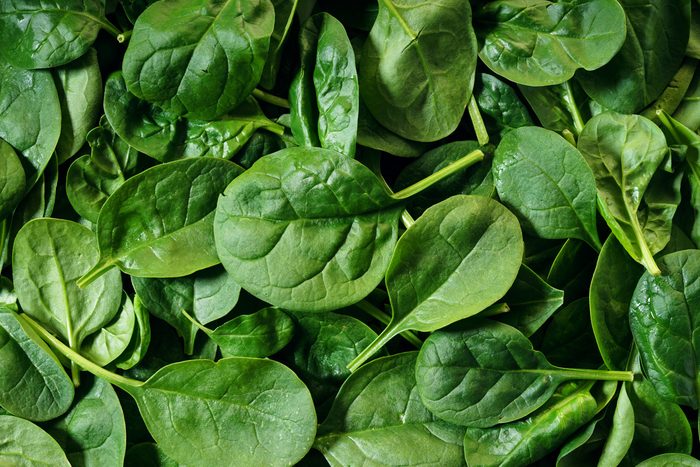
5. Give spinach some heat
Fun fact: Cooked spinach is higher in iron, calcium, and magnesium than raw spinach. The reason? Heat helps to release these minerals from compounds they are bound to so your body can absorb them better. When cooking spinach, use gentle heat, suggests Brissette. “That will keep the more delicate vitamins intact,” she says.
Tip: Steam, microwave, or use other methods that use lower heat to cook your spinach and never submerge it in water.
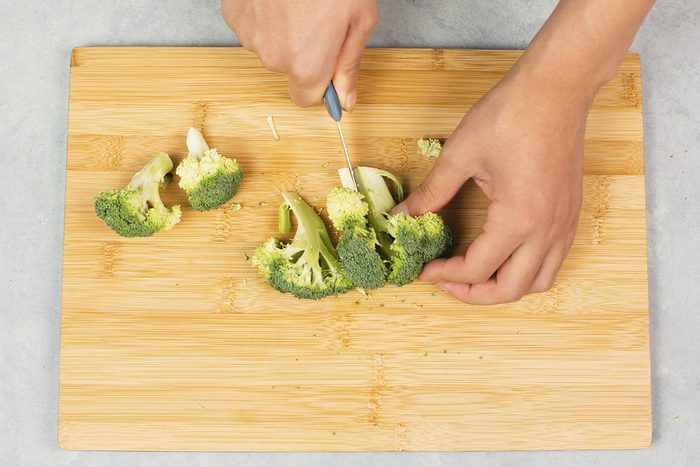
6. Go whole with your veggies for healthy meal prep
The best way to preserve nutrients in your foods is to eat the entire thing, says Ilana Muhlstein, a registered dietitian in Los Angeles. “People frequently cut the broccoli florets off the stalk and discard the rest,” she says. “The broccoli stalk is like eating pure fiber, essential for keeping you full, regular, and heart healthy.”
Tip: Consider shredding broccoli stalks raw into a salad or soup.
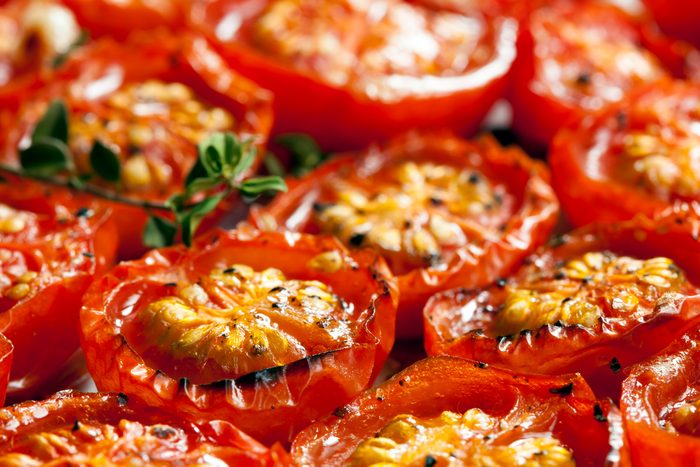
7. Embrace the power of cooked tomatoes
While there’s nothing like a summer treat—a platter of fresh tomatoes, mozzarella, and basil, for example—cooked tomatoes pack a bigger health benefit. “Heating tomatoes increases the lycopene, a powerful antioxidant in tomatoes, that’s available for the body to absorb,” says Lindsey Janeiro, a registered dietitian in Sarasota, Florida.
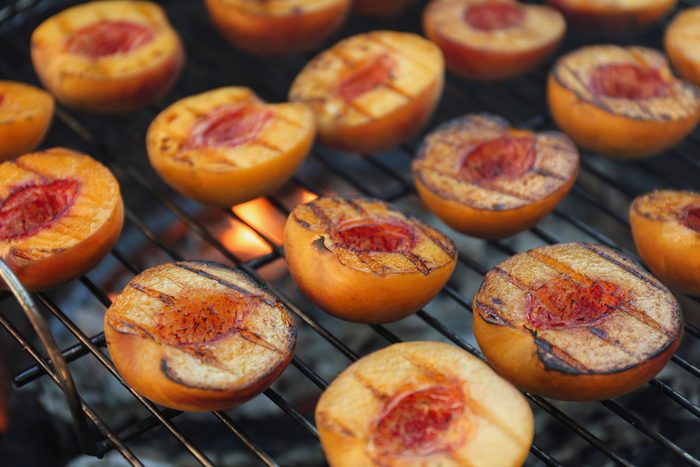
8. Fruits deserve to be grilled
Try grilling a fruit like pineapple or watermelon to enhance flavors without dramatically impacting nutrition. “It doesn’t take much time (just 30 seconds per side for watermelon) to add flavor,” says Janeiro.
Tip: Be careful not to overcook. Grilling fruit for too long can lead to a moisture loss, including the water-soluble vitamins found in the juice.
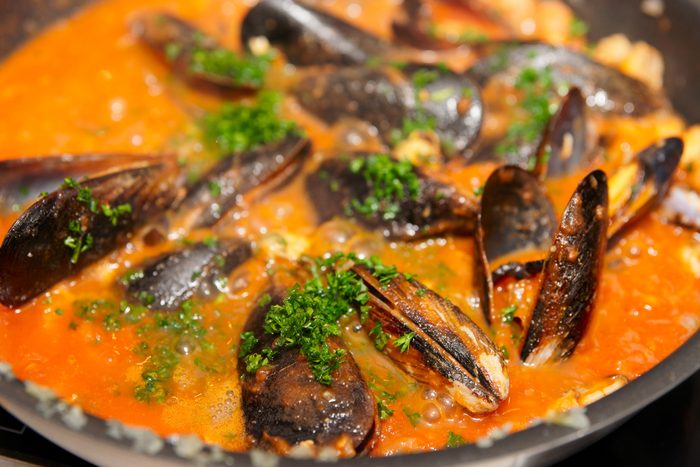
9. Cook fish a different way
While nearly all methods of cooking fish will retain nutrients, says Diane Henderiks, a registered dietitian in Tinton Falls, New Jersey, if you make a soup or stew, you will be consuming any nutrients that seep into the liquid. “Shorter cooking times retain the most nutrients and most fish is cooked quickly.”
Tip: Crudo or ceviche is another way to retain the nutrients in fish because no heat is added, Henderiks adds.
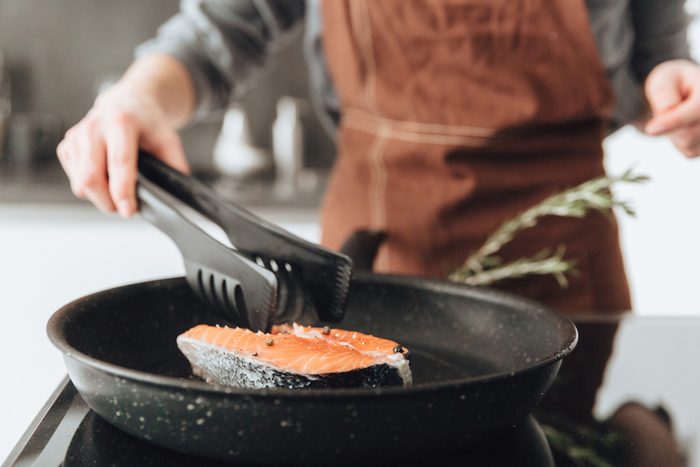
10. Use moist heat for fish
While the quality of the fish you’re eating will dictate the amount of omega-3s (especially in salmon), using moist heat for a short duration won’t impact the heart-healthy omega-3s in it, Janeiro says.
Tip: To best do this at home, quickly steam, braise, or sear fish.

11. Don’t shy away from the freezer aisle
If you don’t have access to the cream of the crop in fresh veggies, you can rest easy swapping in frozen veggies next time you’re cooking dinner. “Frozen veggies are usually frozen at their peak ripeness, so you can be sure they contain their highest nutrient content,” says Amy Margulies, a registered dietitian in Chicago. “Most frozen veggies don’t have added sodium as a preservative so they’re a great way to consume them at their peak.”
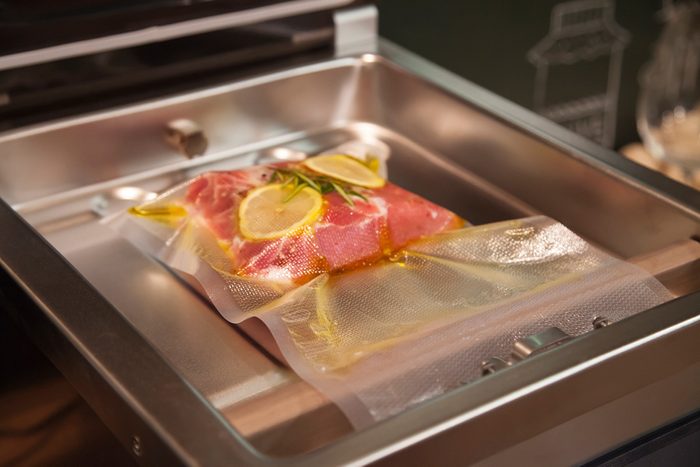
12. Embrace sous-vide when meal prepping
Sous-vide cooking—in which foods are cooked while vacuum-sealed—is becoming increasingly trendy, and emerging research shows it may have nutritional advantages for certain foods. “For example, a [2017] study showed higher content of minerals like zinc, iron, potassium, and copper in cereals and legumes prepared in sous-vide methods compared to traditional cooking methods,” says Janeiro.
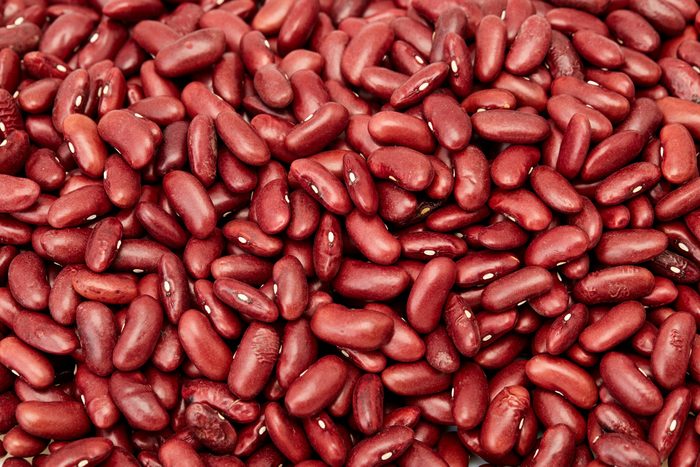
13. Beans don’t need a pre-soak
Once upon a time, it was considered a must to pre-soak beans. What we’re learning is that oligosaccharides, a type of carbohydrate found in beans, are mostly lost when you soak them, Margulies says. “Oligosaccharides are an energy source for some of good bacteria in the large intestine,” she says. “Without them, consuming the beans would not aid in promoting the growth of healthy bacteria in our guts.”
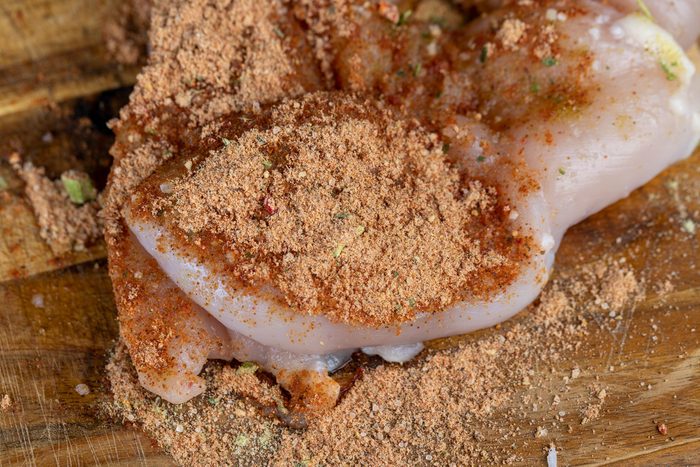
14. Spice up your meats
Adding spices not only changes the flavor of what you’re cooking but can make your food safer, too, Margulies says. “For example, when cooking lean meats on a grill or at high temperature, certain spices can help reduce the formation of harmful compounds, like carcinogens,” she says. “Be sure to marinate your meat, as well as avoid the flame from directly touching the meat.”

15. Get grill savvy
For starters, limit grill time, suggests Allison Stowell, a registered dietitian in New York. “Thinner cuts of meat, precooking in the oven, or skewering small pieces of meat will reduce the amount of time meat is cooked on the grill at high heat and therefore limits the potential for the carcinogen production that can increase when food is cooked over a direct flame,” she says. Trimming the fat before grilling is not only healthier for you, but it also reduces the potential for drippings that cause flare ups (and ultimately charred meat), she adds.
Tip #1: Marinate carefully: Thinner, vinegar-based marinades are a better option when it comes to reducing the risk of developing potential cancer-causing compounds when grilling. “Thicker, carbohydrate rich sauces (with honey or sugar) are more likely to cause charring,” Stowell says.
Tip #2: Hold the sauce: If you love traditional barbecue sauce, use it once your meat is cooked. “Cook the meat at a lower heat and wait until the end to add barbecue sauce to reduce the potential for charring and increase your potential for juicy meat,” she says.
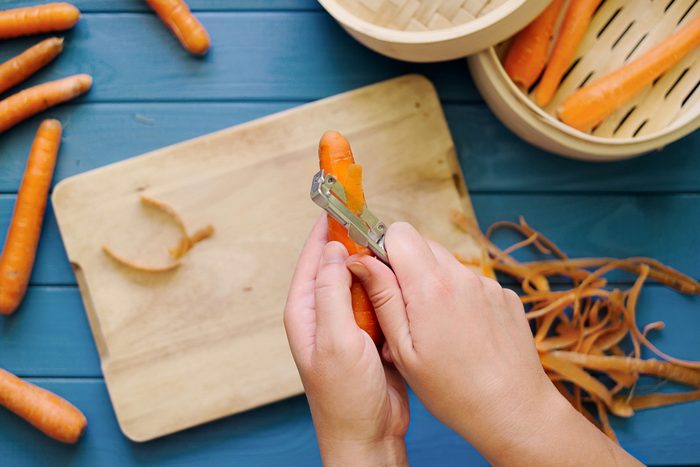
16. Skip the peeling during your healthy meal prepping
Try washing or scrubbing vegetables rather than peeling them, suggests Rene Ficek, a registered dietitian in Ottawa, Illinois. “Unless the peel or outer layer is unpalatable, damaged or contaminated, cook the food whole,” she says. “Most vegetables are peeled or trimmed before cooking to remove the tough skin or outer leaves. But most nutrients, such as vitamins, tend to lie close to the skin surface, so excessive trimming can mean a huge reduction in a vegetable’s nutrient value.”
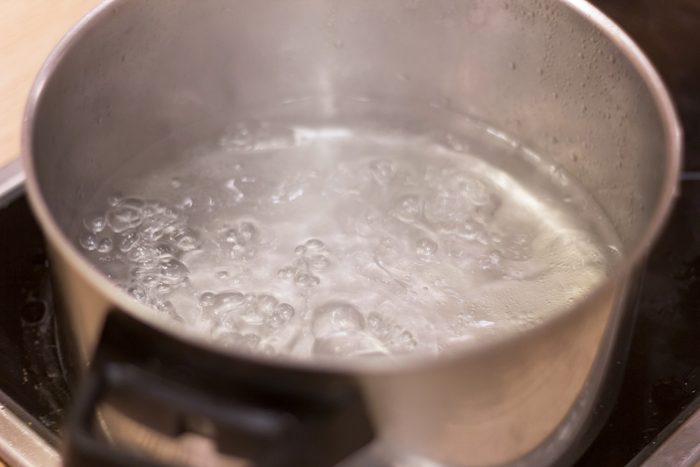
17. Re-use boiling water
When boiling vegetables, a good portion of water soluble vitamins leaches out of the vegetables and into the water, Ficek says. “If possible use the cooking water for gravies, sauces, or soups as it is a source of water-soluble vitamins and minerals.”
Tip: Add produce to boiling water (not cold water). This minimizes the nutrient losses as it spends less time in the water, she says.
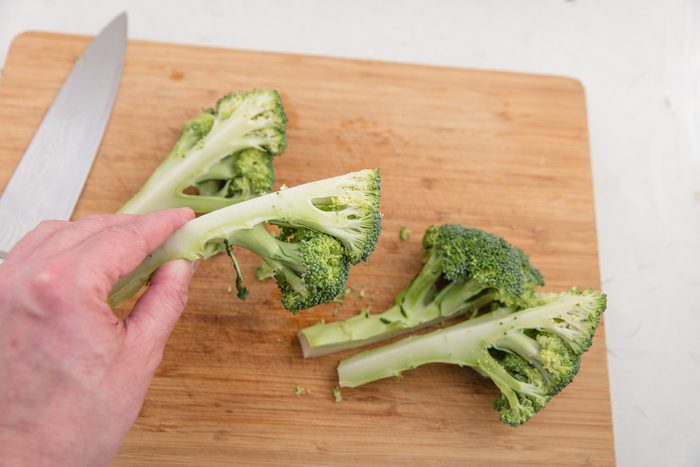
18. Big veggie pieces are healthier
Next time you’re tempted to dice and mince your veggies, reconsider it. “Large florets of broccoli retain the vitamin C better than super small pieces,” says Jennifer Bowers, PhD, a registered dietitian in Tucson, Arizona.

19. Shorten meal prep time
Keep fruits and vegetables whole until you’re ready to eat them. “Cutting up your produce increases the exposure to oxygen and speeds up deterioration and spoilage,” Bowers says. “It also releases certain nutrients such as vitamin C and carotenoids.”
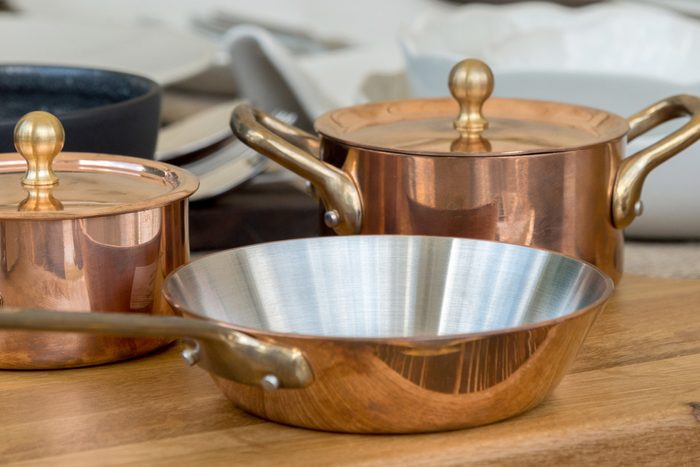
20. Avoid copper utensils
When prepping fruits and veggies, avoid using copper utensils. “Turns out copper can destroy vitamin C in foods,” Ficek says. “Save those copper utensils to use on meat.”
About the experts
|
For daily wellness updates, subscribe to The Healthy by Reader’s Digest newsletter and follow The Healthy on Facebook and Instagram. Keep reading:
















